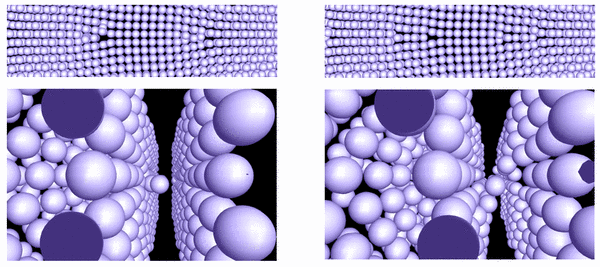Dislocation pairing transition
The structure of grain boundaries can depend on the temperature and other environmental conditions. In this project we investigate this structural transition in delta iron using Ginzburg-Landau models, which are derived from phase field crystal or classical density functional theory. In partiuclar, we can identify that the temperature dependent dislocation core volume is the decisive factor for the dislocation pairing transition.

Fig. 1: 3D visualization of the dislocation pairing transition. At high temperatures, the dislocations have pure edge character (left), whereas at low temperatures they split into dislocations with a mixed edge and screw character (right). This leads to a bending of the lattice planes (bottom right).
© Robert Spatschek, Max-Planck-Institut für Eisenforschung GmbH
